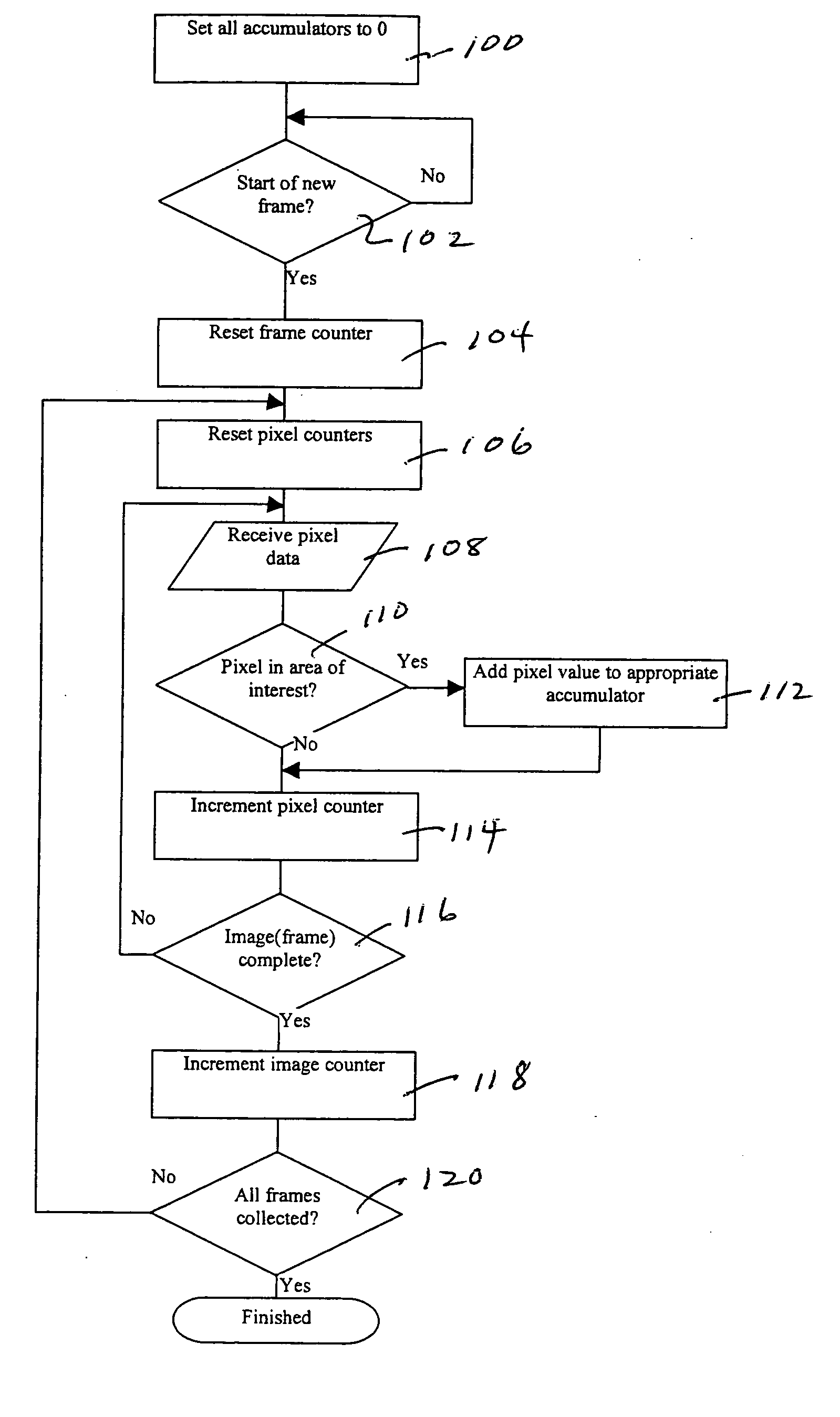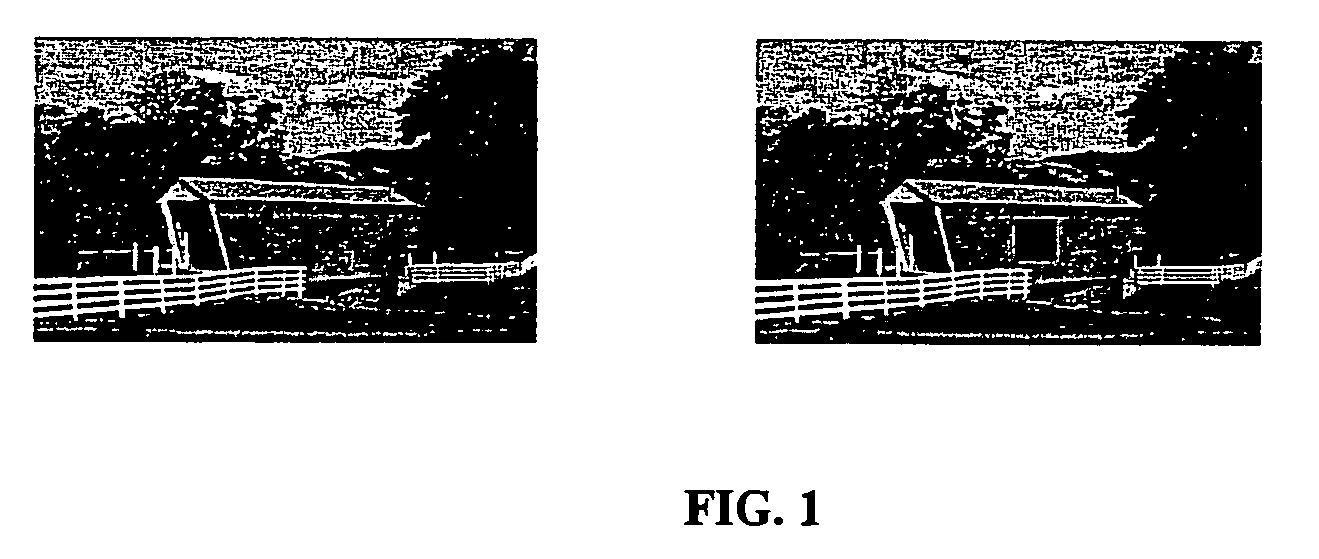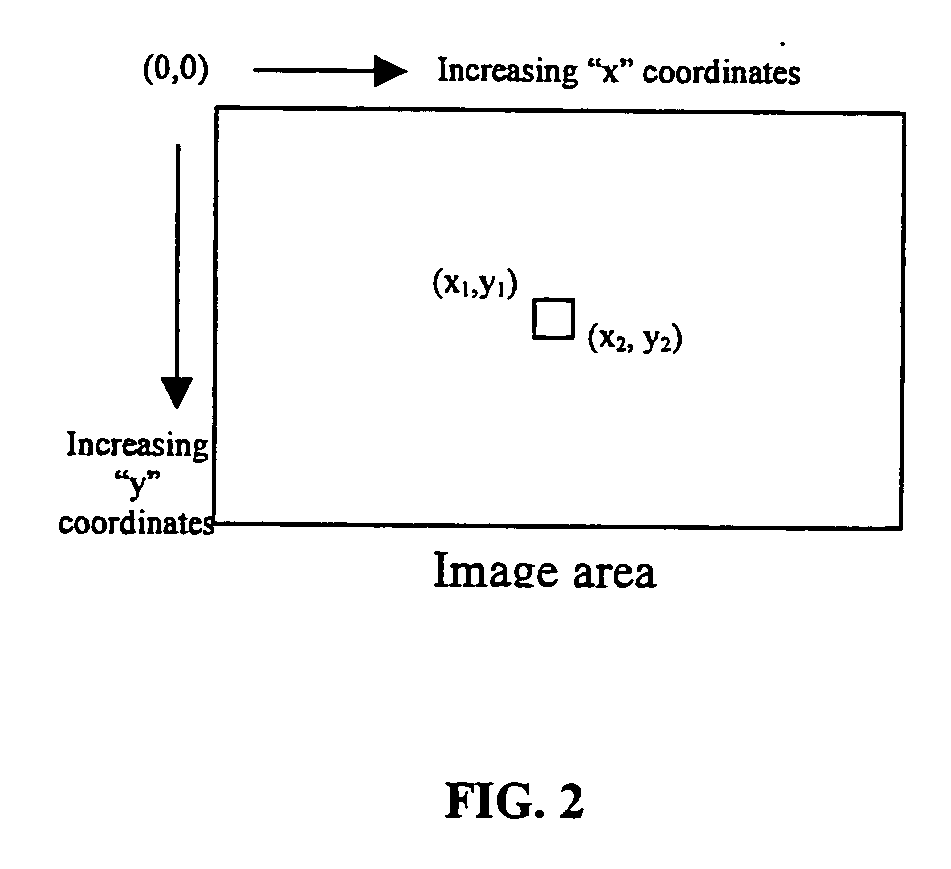Method for collecting data for color measurements from a digital electronic image capturing device or system
a technology of electronic image capture and color measurement, applied in the field of collecting data from electronic image capture devices or systems, can solve the problems of ineffective color measurement accuracy of digital imaging chips, increased transmission rate, and loss of color information,
- Summary
- Abstract
- Description
- Claims
- Application Information
AI Technical Summary
Benefits of technology
Problems solved by technology
Method used
Image
Examples
Embodiment Construction
Operational Overview
[0030] An electronic image capture device or system (typically an imaging chip such as that used in a digital camera or the camera itself) is typically designed to capture images as an array of red, green and blue pixels. The devices generate values proportional to the amount of light (of each color) that strikes each pixel. One image capture device that can be used in one embodiment is shown in FIGS. 1 and 2. This device is particularly useful in making skin color measurements.
[0031] While the devices are typically used to capture an entire image, the data collection method described herein does not collect an image, but individual pixel data only for one or more points or regions of interest where a color measurement is desired. This invention in certain embodiments also provides a set of operating conditions for a digital imaging device that will enable the device / system to provide highly accurate and consistent color information.
[0032] An electronic image...
PUM
 Login to View More
Login to View More Abstract
Description
Claims
Application Information
 Login to View More
Login to View More - R&D
- Intellectual Property
- Life Sciences
- Materials
- Tech Scout
- Unparalleled Data Quality
- Higher Quality Content
- 60% Fewer Hallucinations
Browse by: Latest US Patents, China's latest patents, Technical Efficacy Thesaurus, Application Domain, Technology Topic, Popular Technical Reports.
© 2025 PatSnap. All rights reserved.Legal|Privacy policy|Modern Slavery Act Transparency Statement|Sitemap|About US| Contact US: help@patsnap.com



